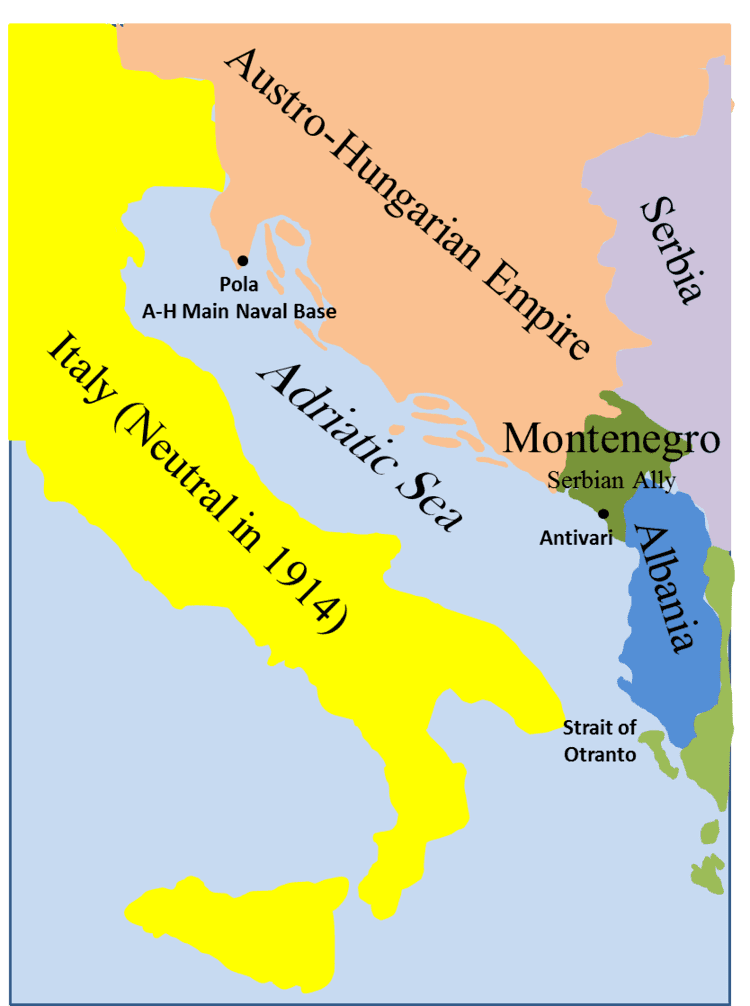Date 16 August 1914 | ||
 | ||
Results Allied victory, End of the blockade of Montenegro Combatants Austria‑Hungary, United Kingdom, French Third Republic Similar World War I, Adriatic Campaign of World, Battle of the Strait of Otranto, Battle of Imbros, Bombardment of Ancona | ||
The Battle of Antivari or Action off Antivari was a naval engagement between the French, British and Austro-Hungarian navies at the start of World War I. The Austrian light cruiser SMS Zenta and the destroyer SMS Ulan were bombarding the Montenegrin town of Antivari, when on 16 August 1914 they were cut off by a large Anglo-French force that had sortied into the Adriatic in an attempt to bring the Austro-Hungarians into a fleet action. The two Austrian vessels were forced to fight an engagement in order to attempt to free themselves. Although Zenta was destroyed, Ulan escaped and the Austrian fleet did not come out of port to meet the Allied fleet. After blockading the Adriatic for a while the French were forced to withdraw due to lack of supplies.
Contents
Background
When war broke out between the Austro-Hungarian Empire and Montenegro, the Austro-Hungarians began a blockade of the Montenegrin coast as well as several bombardments of the various towns and cities there. The French Navy had decided to try to force the Austro-Hungarian Navy into a decisive fleet action by making a sortie into the Adriatic and bait the Austrians into engaging them. The Allied force consisted of two dreadnought battleships, 10 pre-dreadnought battleships, four armoured cruisers, one protected cruiser and more than 20 destroyers.
Battle
The Allied Fleet managed to cut off Zenta and Ulan from escaping back to the main Austro-Hungarian fleet. Badly outnumbered, Zenta's commander decided to fight in order to allow Ulan to escape. Zenta also had a serious disadvantage: her 120 mm guns were significantly outranged by the heavier enemy batteries. As a result, the French battleships scored many hits on their target without taking any damage themselves. Eventually, Zenta sank with 173 men killed and over 50 wounded, but she did succeed in buying enough time for Ulan to escape.
Aftermath
Despite Zenta being cut off, the main body of the Austro-Hungarian fleet did not sortie out to do battle as the French had hoped. Still, the action had effectively ended the blockade on Montenegro.
The French fleet did not have the logistical support to remain in the Adriatic for very long and so were forced to return to Malta periodically to resupply.
